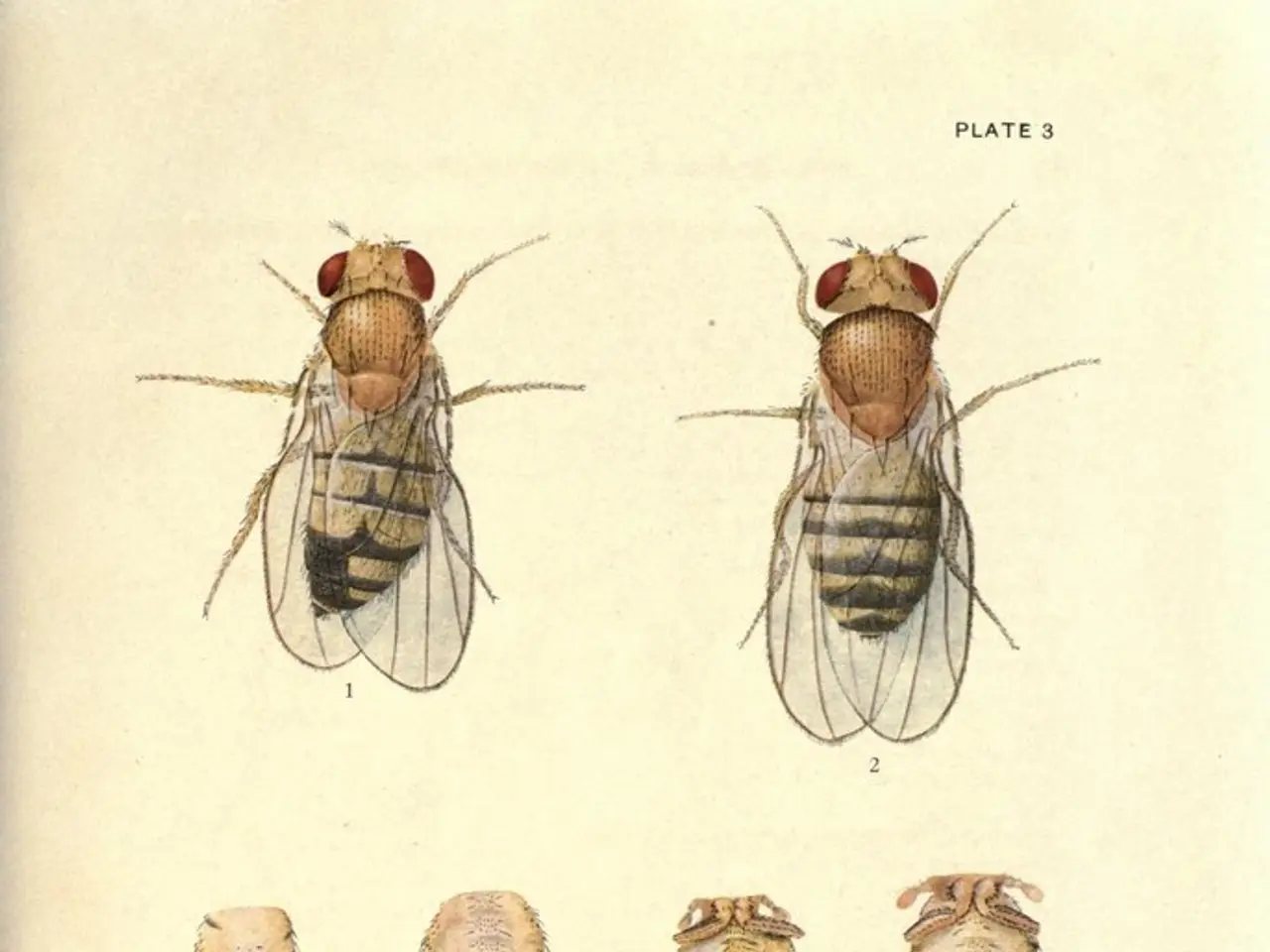Seasonal Shift Brings Increased Insect Activity: Mindful of Potential Allergic Responses to Stings
News Article: Recognising and Treating Dangerous Allergic Reactions to Insect Stings
In Dortmund last year, 559 AOK insured individuals sought outpatient treatment for insect stings. While most cases result in localised reactions, some can lead to life-threatening allergic reactions known as anaphylaxis.
Identification of Dangerous Allergic Reactions
To identify anaphylaxis and severe allergic symptoms, it's crucial to recognise symptoms that go beyond a typical localised reaction. Symptoms to watch for include difficulty breathing, wheezing, or throat tightness; swelling of the face, lips, tongue, or throat; hives or widespread rash beyond the sting site; dizziness, fainting, nausea, or vomiting; rapid or weak pulse, drop in blood pressure (shock); trouble swallowing or speaking; confusion or loss of consciousness. These symptoms indicate a life-threatening allergic reaction and require immediate action.
Treatment of Dangerous Allergic Reactions
In cases of anaphylaxis, immediate emergency steps include calling emergency services and administering intramuscular epinephrine (adrenaline) as soon as possible. While waiting for emergency help, keep the person calm, remove tight clothing, and position them lying down with legs elevated if in shock. Monitor the person’s breathing and circulation; be prepared to perform CPR if necessary.
Healthcare providers will administer epinephrine and may give antihistamines, corticosteroids, and oxygen if needed. Severe allergic reactions often require observation in a medical facility due to the risk of biphasic reactions (recurrence of symptoms). For infections of the sting site, antibiotics may be prescribed.
Ongoing Management
Patients with insect sting allergy, especially after severe reactions, should consult an allergy specialist for evaluation and confirm diagnosis. Venom immunotherapy (allergy shots) is a proven treatment that can substantially reduce the risk of future severe reactions and may provide long-term remission or cure. Patients should carry epinephrine autoinjectors and be trained on their use, as well as have action plans for future stings.
Less Severe Reactions
Less severe but still significant allergic reactions may involve extensive swelling, generalised hives without breathing difficulty, or large local swelling. These reactions are typically managed with removal of the stinger carefully, cleaning the site with soap and water, application of ice to reduce swelling and pain, use of topical corticosteroids or antihistamines to reduce itching and rash, and over-the-counter pain relief if needed.
In summary, dangerous allergic reactions—mainly anaphylaxis—are identified through systemic symptoms like breathing difficulty, swelling beyond the sting site, and shock signs, and require immediate epinephrine administration and emergency care. Long-term management includes specialist consultation and possibly venom immunotherapy to prevent future severe reactions. Cooling provides relief for insect stings, and anaphylactic shock can be life-threatening, especially after a bee sting. In the worst case, an allergic reaction for those affected can lead to respiratory and circulatory failure. In case of an emergency, the emergency doctor should be called. If there is an increasing and persistent reddened swelling, a doctor should be consulted. For people with an insect venom allergy, the immune system reacts to certain protein components of the respective venom. On average, 200 people die from anaphylactic shock in Germany each year. Allergists should always carry an emergency kit containing effective medication. In most cases, an insect sting is forgotten after a few days. Severe symptoms may require an antihistamine or cortisone-containing ointment.
- In the field of healthcare, venom immunotherapy is a confirmed treatment for reducing the risk of future severe insect sting reactions, offering long-term remission or cure.
- For individuals with underlying medical conditions like skin-care issues or specific nutrition needs due to medicare restrictions, managing an allergic reaction to an insect sting may require additional considerations.
- Workplace-wellness programs can include fitness-and-exercise and mental-health elements, which can help individuals better cope with the stress and anxiety that may accompany an insect sting allergy and its management.
- Therapies-and-treatments for mental health, such as cognitive-behavioral therapy or mindfulness exercises, can help manage fear and anxiety related to insect stings and venom allergies.
- In seeking treatment for an insect sting allergy, it's essential to remember that comprehensive health-and-wellness, encompassing both physical and mental aspects, can lead to a more holistic and effective approach to managing this potentially life-threatening condition.




